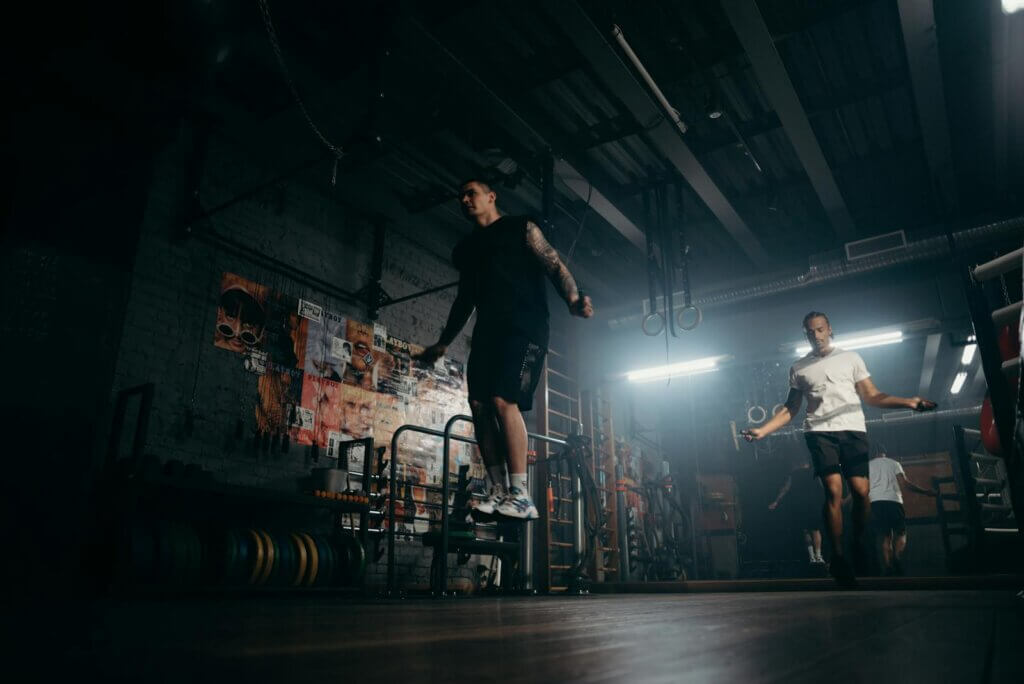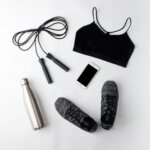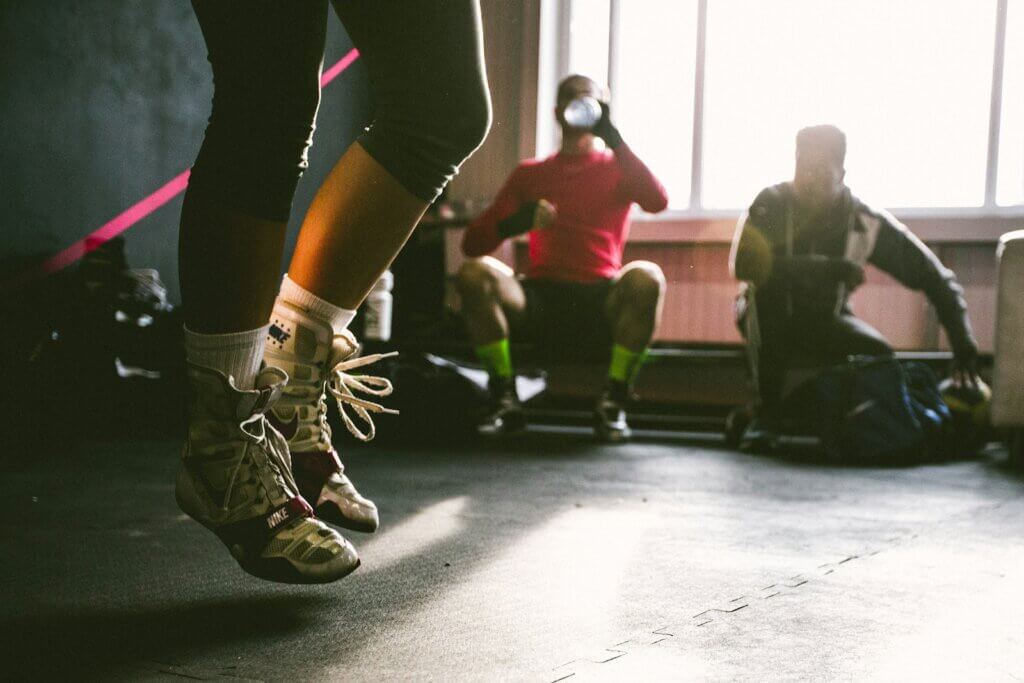How to do Single Unders (Jump Rope)

Introduction:
Single unders are a fundamental exercise in CrossFit and general fitness training, involving jumping rope with one pass of the rope under your feet for each jump. This simple yet effective movement is excellent for building cardiovascular endurance, coordination, and agility. Whether you’re a beginner looking to master the basics or an intermediate athlete refining your technique, single unders are a great addition to any workout regimen. In this guide, we’ll break down the mechanics of single unders, provide a step-by-step tutorial, discuss necessary equipment, scaling options, common mistakes, benefits, and alternative exercises.
Steps in the Single Under movement
Starting Position:
- Stand upright with your feet hip-width apart.
- Hold the jump rope handles lightly in each hand, with the rope resting behind your heels.
- Keep your elbows close to your sides and your forearms angled slightly forward.
Jumping:
- Begin by swinging the rope over your head using your wrists, not your arms.
- As the rope approaches your feet, lightly jump off the ground, just high enough for the rope to pass under.
- Land softly on the balls of your feet, with your knees slightly bent to absorb the impact.
- Maintain a steady rhythm, aiming for consistent, controlled jumps.
Breathing and Timing:
- Breathe naturally, avoiding holding your breath.
- Focus on timing your jumps with the rope’s movement, maintaining a steady pace.
What Equipment is needed
- Jump Rope: Choose a rope that is appropriate for your height and skill level. Adjustable ropes are ideal for beginners.
- Athletic Shoes: Wear supportive shoes with good cushioning to protect your feet and joints.
Choosing the Right Jump Rope
To perform single unders effectively, having the right equipment is essential. A well-chosen jump rope can make a significant difference in your training. Consider adjustable ropes that allow you to modify the length to suit your height, ensuring optimal performance. Lightweight ropes with comfortable, ergonomic handles can reduce hand fatigue and improve control during extended sessions. Additionally, wearing supportive athletic shoes with good cushioning can help absorb impact and protect your joints. Investing in quality equipment not only enhances your performance but also contributes to a safer and more enjoyable workout experience.
Selecting the appropriate jump rope is crucial for effective training and injury prevention. Consider factors such as rope length, material, and handle design. A rope that’s too short or too long can hinder performance and increase the risk of tripping. To determine the correct length, stand on the middle of the rope; the handles should reach up to your armpits. Materials like PVC or coated wire offer different weights and durability, affecting the rope’s speed and feedback. Handles with comfortable grips and bearings can enhance control and reduce wrist fatigue. Investing in a quality jump rope tailored to your needs can significantly improve your single under performance and overall workout experience.
Check out the Equipment subsite for more tools, tips, and inspiration.

Shop Fitness gear now on Amazon
See Amazons extensive range of workout gear here. (Affiliate Link)
Scaling Options:
To gradually build strength and proficiency, consider the following scaling options:
- Beginner Adjustment: Start with slower, more deliberate jumps to get comfortable with the rhythm and coordination required.
- Progression: As you become more proficient, gradually increase the speed and number of repetitions.
Common Mistakes to Avoid:
- Incorrect Rope Length: Ensure your jump rope is the right length. When standing on the middle of the rope, the handles should reach your armpits.
- Jumping Too High: Aim for minimal jumps, just high enough for the rope to pass under your feet. Excessive height can lead to fatigue and poor form.
- Using Arms Instead of Wrists: Focus on rotating the rope with your wrists rather than your entire arms to maintain efficiency and prevent fatigue.
- Poor Landing Technique: Land softly on the balls of your feet, not flat-footed, to reduce impact on your joints.
Benefits of the Movement:
- Cardiovascular Endurance: Single unders are an excellent cardio workout, improving heart health and stamina.
- Coordination and Agility: The rhythmic nature of jump rope enhances coordination and quick footwork.
- Caloric Burn: This high-intensity exercise is effective for burning calories and aiding weight loss.
- Full-Body Engagement: While primarily targeting the lower body, single unders also engage the core, shoulders, and arms.

Which Muscles Are Worked:
During this exercise, the following muscle groups are engaged:
- Primary Muscles: Calves, quadriceps, hamstrings.
- Secondary Muscles: Shoulders, forearms, and core.
Alternative Similar Movements:
If you’re seeking variation or targeting specific muscle groups, consider incorporating these alternative exercises:
- Double Unders: A more advanced variation where the rope passes under your feet twice with each jump.
- High Knees Jump Rope: Incorporates high knee lifts into the jump rope routine for added intensity.
- Box Jumps: An explosive plyometric exercise that also targets the lower body and enhances coordination.
- Jumping Jacks: A basic bodyweight exercise that provides a similar cardio benefit without equipment.
Progression to Double Unders
Once you’ve mastered single unders, progressing to double unders can provide a new challenge and further benefits. Double unders involve the rope passing under your feet twice for each jump, requiring greater coordination, timing, and speed. To transition, start by ensuring consistency in your single unders, focusing on maintaining a steady rhythm and proper form. Introduce double under attempts by performing a few single unders followed by a double under, known as “single-single-double.” Gradually increase the frequency of double unders as your proficiency improves. It’s essential to maintain patience and practice regularly, as mastering double unders can take time. Incorporating this progression not only adds variety to your routine but also enhances cardiovascular endurance and muscular coordination.

Shop Fitness gear now on Amazon
See Amazons extensive range of workout gear here. (Affiliate Link)
Warm-Up and Stretching Routine
Before engaging in single unders, it’s crucial to prepare your body adequately to prevent injuries and optimize performance. Begin with a general warm-up to increase your heart rate and blood flow to the muscles. This can include light aerobic activities such as brisk walking or jogging for 5-10 minutes. Following the general warm-up, focus on dynamic stretching exercises that target the muscles involved in jumping rope. Leg swings, ankle rotations, and calf raises can help loosen the lower body, while arm circles and shoulder rolls prepare the upper body. Incorporating mobility drills, such as hip flexor stretches and thoracic spine rotations, can further enhance your range of motion. A well-structured warm-up not only reduces the risk of injury but also improves your performance during the workout.
Incorporating Single Unders into Workout Routines
Single unders are versatile and can be integrated into various workout routines to enhance cardiovascular fitness, agility, and coordination. For high-intensity interval training (HIIT), consider alternating between periods of single unders and strength exercises like push-ups or squats. For example, perform 30 seconds of single unders followed by 30 seconds of bodyweight exercises, repeating for several rounds. Incorporating single unders into circuit training can also be effective; include them as one of the stations in a circuit that targets different muscle groups. Additionally, using single unders as a warm-up or cool-down activity can help prepare your body for more intense exercise or aid in recovery. The adaptability of single unders makes them a valuable addition to any fitness regimen.
Q&A for jump rope
How do you teach single unders?
Start by having learners practice the basic jump without the rope, focusing on rhythm and timing. Then, introduce the rope and emphasize small, controlled jumps with wrist rotation.
How to do single jump rope?
Hold the handles lightly, swing the rope over your head with your wrists, and jump just high enough for the rope to pass under your feet. Land softly and maintain a steady rhythm.
What is a single under in CrossFit?
A single under is a jump rope exercise where the rope passes under your feet once for each jump. It’s a fundamental skill often used in CrossFit workouts to build coordination and endurance.
How to crossover single unders?
To crossover single unders, cross your arms at the elbows in front of you as the rope comes down. Jump through the crossed arms and then uncross them for the next jump.
Are double unders harder than single unders?
Yes, double unders are more challenging because the rope passes under your feet twice per jump, requiring more speed, coordination, and higher jumps.
Why do CrossFitters do double unders?
CrossFitters do double unders because they provide a more intense cardiovascular workout and improve coordination, agility, and timing.
Are triple-unders possible?
Yes, triple-unders are possible but very advanced. They require the rope to pass under your feet three times per jump, demanding exceptional speed and coordination.
How long should 100 single unders take?
The time it takes to complete 100 single unders varies, but for most people, it can take around 1-2 minutes with a steady rhythm.
Do you jump higher for double unders?
Yes, you need to jump higher for double unders to allow the rope to pass under your feet twice before landing.
What is the secret to double unders?
The secret to double unders is wrist speed and timing. Keep your jumps consistent and use your wrists to whip the rope quickly.
How to do triple unders?
To do triple unders, jump higher than usual and use rapid wrist rotation to pass the rope under your feet three times before landing. Consistent practice and strong wrists are key.
How to do a nasty crossover?
For a nasty crossover, perform a standard crossover but add a higher jump and faster wrist rotation to increase difficulty. Practice timing and coordination to execute it smoothly.
Are there different jump rope types for CrossFit?
Yes, there are different jump rope types for CrossFit, including speed ropes for fast-paced jumps, weighted ropes for strength training, and beaded ropes for beginners to help with timing and control.
Conclusion:
Incorporating single unders into your workout routine is a fantastic way to boost your cardiovascular fitness, coordination, and overall athleticism. With consistent practice and attention to form, you’ll master this fundamental movement and build a strong foundation for more advanced exercises. So grab your jump rope, find your rhythm, and jump into a fitter, more agile you!

Shop Fitness gear now on Amazon
See Amazons extensive range of workout gear here. (Affiliate Link)

🏋️ Written by: Mike Kerr
Mike is the founder of Strengthguides.com and a certified CrossFit Level 1 Trainer (CF-L1) and certified Kettlebell Instructor with over 10 years of experience in functional fitness. He specializes in developing programs that maximize performance without sacrificing mobility. Mike Kerr is passionate about making complex training methodologies comprehensible and safe for everyone.
